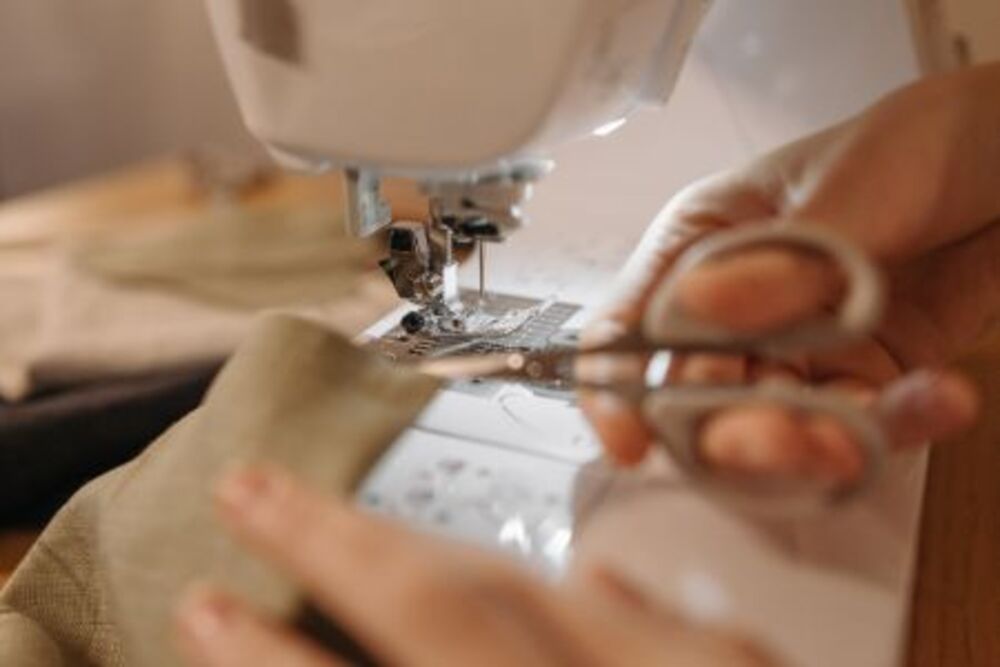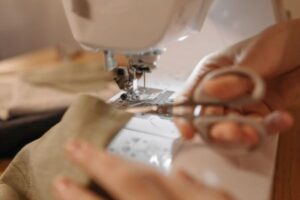
Manual sewing machines make an excellent starting point for novice sewers. Their manual control gives more precision over stitch appearance while teaching basic sewing techniques before progressing to more complicated machines. Look out for the best embroidery machine for beginners.
When selecting a manual sewing machine, be sure it offers all the features that meet your requirements. Make sure it can handle the fabrics that you routinely sew on, and that it responds well when pressure is applied on its foot pedal; and that it doesn’t stall or growl when sewing thick fabrics.
Needle Threading
Threading the needle should be your first priority, whether done manually or using an automatic needle threader. There are various models on the market; therefore, make sure that you find one which matches your machine and type of thread.
Silver wire loop needle threaders offer the cheapest solution. Simply insert one end of your thread into its diamond-shaped wire loop, pull through it until both ends hang off both sides of it, and stick the looped thread in your needle eye.
If you’re having difficulty, soak the end of your thread in water to strengthen and ease push through. Moisture will strengthen and soften it so it can pass more easily through needle eyes.
Threading the Bobbin
A bobbin is a small “spool” of thread that you either wind yourself, or buy prewound from someone else, which sits inside a round metal case and lets you adjust its tension as necessary.
Thread your bobbin correctly or else you will end up with “looped” stitches. This can typically be corrected by changing either upper or lower tension settings of your machine.
To thread a bobbin, keep your needle thread taut while turning the hand wheel towards you (in a counterclockwise direction) to lower and raise both needle and bobbin threads. Pass needle thread through one of the two bobbin thread guides on either side of your machine that have arrows indicating where thread should pass through these guides.
Threading the Needle
A needle is the tiny pointy object used to puncture fabric. It has an eye on it through which thread can be threaded.
Needle threaders are handy tools that make threading needles much simpler. Their small wire “eye” can collapse to fit through the eye of your needle easily, and also feature a hook at their ends to pass thread back up again.
Once your needle threader is prepared, locate and raise its uptake lever (it may be a knob or button). Some machines even feature thread guides which will help guide the thread towards your needle.
Once your thread has been threaded through both bobbin and thread guides, it’s time to get sewing!
Threading the Fabric
Manual sewing machines are an accessible way to get started with sewing. Before undertaking your first project, however, it’s essential that you become acquainted with how it operates and thread it properly.
Manual sewing machines feature both an on-off switch and foot pedal to control stitching speed. To start sewing, raise the presser foot and push down on the pedal before lifting the presser foot to start sewing.
A bobbin is a small thread “spool,” holding both upper and lower threads that come together to create seams. You can either wind your own or purchase prewound ones.
Threading the Machine
Many sewing machines feature similar thread guides that extend from the spool pin down to the needle, making threading an easy process. Simply place the spool of thread on the spool pin, secure it with its cap (available in various sizes); this should complete threading of your machine.
Step two is to lower the presser foot lever on the left side of your machine to open up tension discs so they will accept thread.

